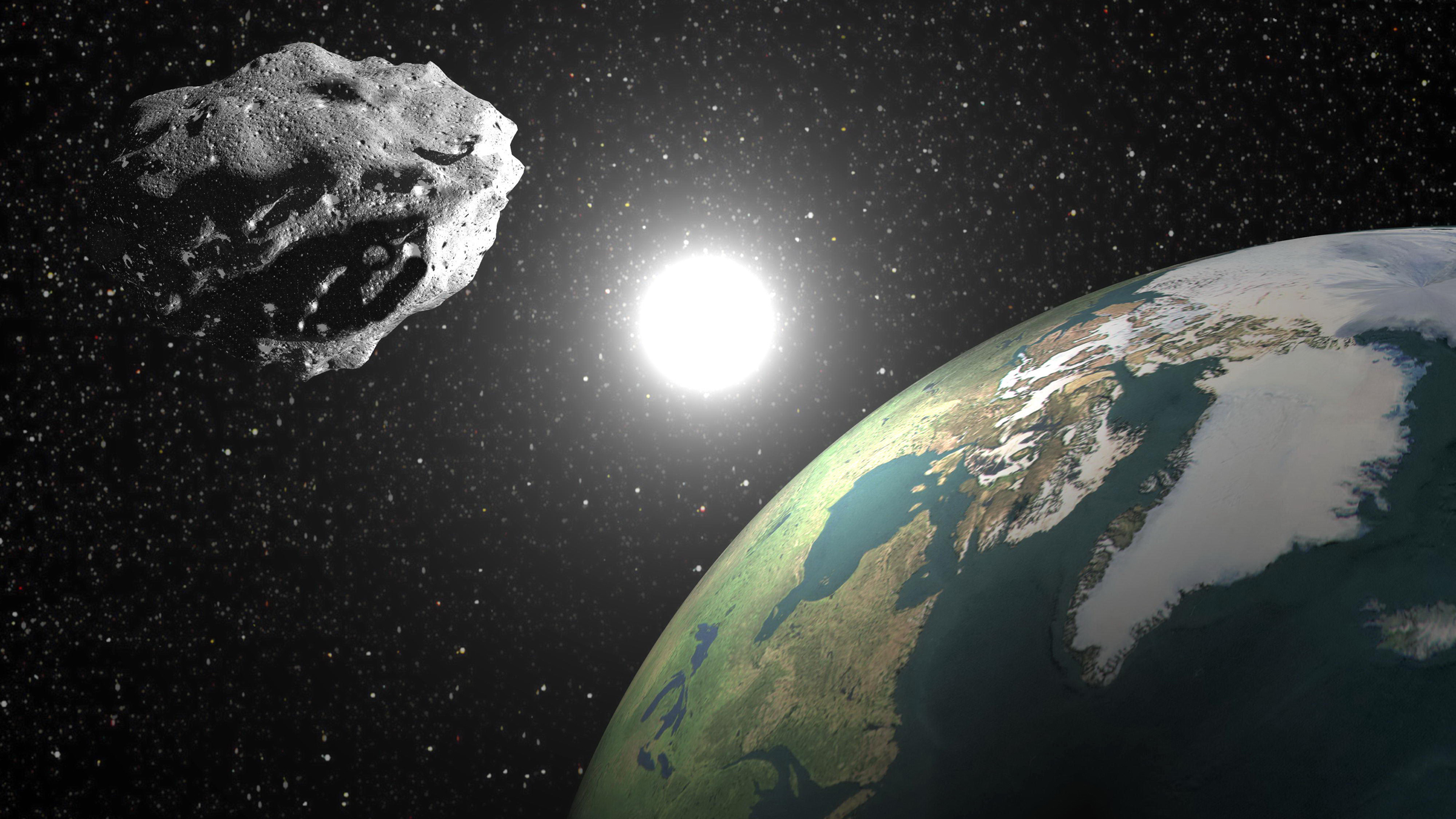New 'quasi-moon' discovered near Earth has been traveling alongside our planet since 100 BC
Astronomers recently identified asteroid 2023 FW13 as a quasi-moon, a space rock orbiting the sun nearly in tandem with Earth.

Scientists recently discovered an asteroid that tags along with Earth during its yearly journey around the sun.
Dubbed 2023 FW13, the space rock is considered a "quasi-moon" or "quasi-satellite," meaning it orbits the sun in a similar time frame as Earth does, but is only slightly influenced by our planet’s gravitational pull. It is estimated to be 50 feet (15 meters) in diameter — roughly equivalent to three large SUVs parked bumper to bumper. During its orbit of the sun, 2023 FW13 also circles Earth, coming within 9 million miles (14 million kilometers) of our planet. For comparison, the moon has a diameter of 2,159 miles (3,474 km) and comes within 226,000 miles (364,000 km) of Earth at the closest point of its orbit, according to NASA.
2023 FW13 was first observed in March by the Pan-STARRS observatory, which is located atop the volcanic mountain Haleakalā in Hawaii. The asteroid's existence was then confirmed by the Canada-France-Hawaii Telescope in Hawaii and two observatories in Arizona before being officially listed on April 1 by the Minor Planet Center at the International Astronomical Union, a network of scientists responsible for designating new planets, moons and other objects in the solar system.
Some estimates suggest that 2023 FW13 has been Earth's cosmic neighbor since at least 100 B.C. and that the space rock will continue to follow this orbital path until around A.D. 3700, Adrien Coffinet, an astronomer and journalist who first categorized the asteroid as a quasi-moon after modeling its orbit, told Sky & Telescope.
"It seems to be the longest quasi-satellite of Earth known to date," Coffinet said.
Following 2023 FW13's initial discovery in March, space observers dug into the data and found observations of the asteroid dating all the way back to 2012, according to Live Science's sister site Space.com.
Despite hovering relatively close to Earth, this quasi-satellite likely isn't on a collision course with our planet.
Sign up for the Live Science daily newsletter now
Get the world’s most fascinating discoveries delivered straight to your inbox.
"The good news is, such an orbit doesn't result in an impacting trajectory 'out of the blue,'" Alan Harris, an astronomer at the Space Science Institute, told Sky & Telescope.
This is not Earth's only quasi-companion; a different quasi-satellite known as Kamo'oalewa was discovered in 2016. The rock sticks similarly close to our planet during its orbit around the sun, and a 2021 study suggested that this asteroid could actually be a fragment of Earth's moon.

Kiley Price is a former Live Science staff writer based in New York City. Her work has appeared in National Geographic, Slate, Mongabay and more. She holds a bachelor's degree from Wake Forest University, where she studied biology and journalism, and has a master's degree from New York University's Science, Health and Environmental Reporting Program.









